Lima is the culinary capital of Latin America. Forget empanadas, in Lima there’s fusion food such as Chifa (Chinese-Peruvian mix), Cheviche (raw sushi-style fish), “Cuy” (BBQ’ed Guinea-pig or hamster), Beef heart skewers (“Anticuchos”) and for dessert, “Picarones” (deep-fried sweet potato rings with honey).
Contents
Fitness in Lima
The best place to jog in Lima is next to the Malecon. This is a pedestrian walkway at the cliff, next to the sea. There are plenty of green parks in this area, along with one or two gym machines roughly every 50 to 100 meters, e.g. a pull-up bar and a triceps-dips bar. These parks, such as Park del Amor or Park Antonio Raimondi are the perfect place to do a calisthenics workout or yoga, outdoors. The Central Miraflores Park (Parque Kennedy) is not a good place for a workout – too crowded.
There aren’t a lot of gym options in Miraflores. Smartfit is not short-term traveler friendly and expects you to pay up and join for a long period of time. Bodytech, which has a few branches, is more tourist friendly but quite expensive: 50 soles for one workout, 150 soles for a week, 350 soles for a month. Miraflores is, after all, the most expensive neighborhood in Lima (and also the safest).
Furthermore, there are yoga options such as Yoga Schnell and Pure Hot Yoga (seems very tourist friendly, no need to speak Spanish). One hot-yoga session is 35 Soles. Otherwise, fitness apps like Sworkit provides general body-weight training workout session ideas to apply at the parks next to the Malecon.
Lima Wholefood Shops
One of the better health shops in Miraflores is Ecotienda (Calle San Martin 417). It has a wide variety of health and wholefood products. In addition, there is a small restaurant in the shop selling Venezuelan Arepas such as in the photo below, as well as e.g. Lucuma smoothies.
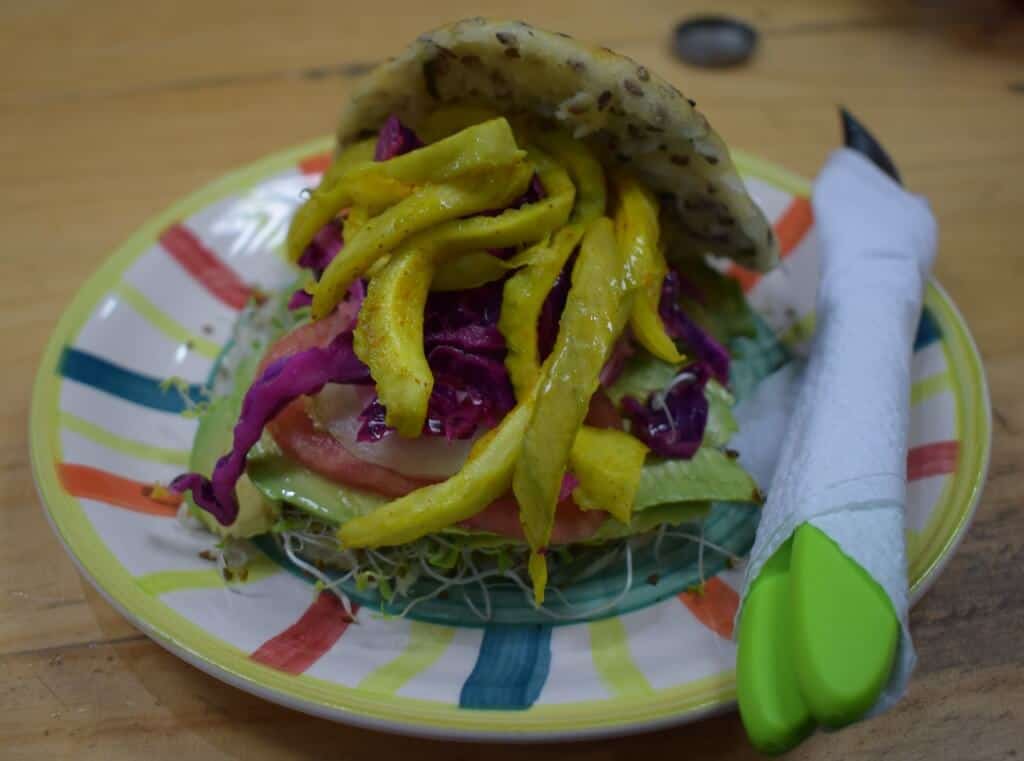
Madre Natura (Calle Chiclayo) has a separate cosmetics shop, as well as a small health shop with a few natural products and superfoods. Not a bad store if you live close, but still quite small. La Colorada Bodega Organica (Calle Enrique Palacios) is close to Madre Natura, but even smaller and with fewer products than Madre Natura. On the other hand, Thika Thani is a larger health store in Miraflores. Here you’ll find plenty of interesting herbs, and natural health products from Lima. This includes superfoods such as Maca, which you’ll find everywhere, even in the supermarkets. Along with South American Cacao and indigenous grains such as Quinoa.
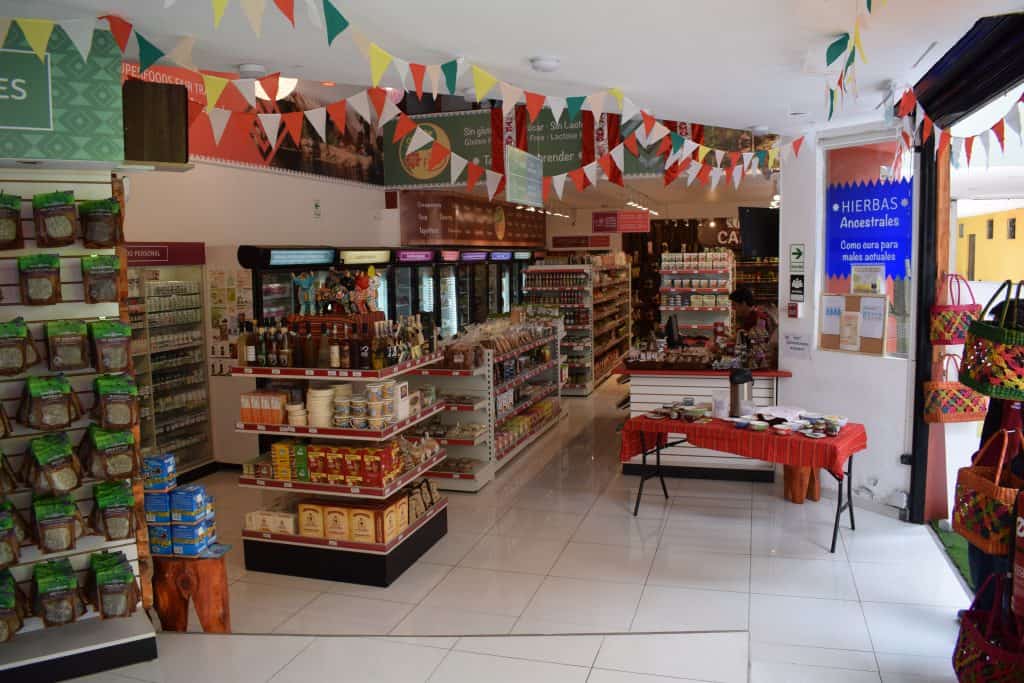
Although Cacao is a local product, strangely enough, dark chocolate bars in Lima are quite expensive. Check out one of the two ChocoMuseo’s in Miraflores if you have time (these chocolate museums can be found in Calle Berlin and Avenida Diagonal). In conclusion, here’s my rating of wholefood stores worth visiting in this affluent neighborhood: First choice: Thika Thani, Second choice: Ecotienda and Third choice: Madre Natura
Lima Restaurants
The most popular local food in Lima is Ceviche. This is raw fish soaked in lemon juice, along with Giant Inka corn, sweet potato, and onion. It’s worth a try and tastes surprisingly good.
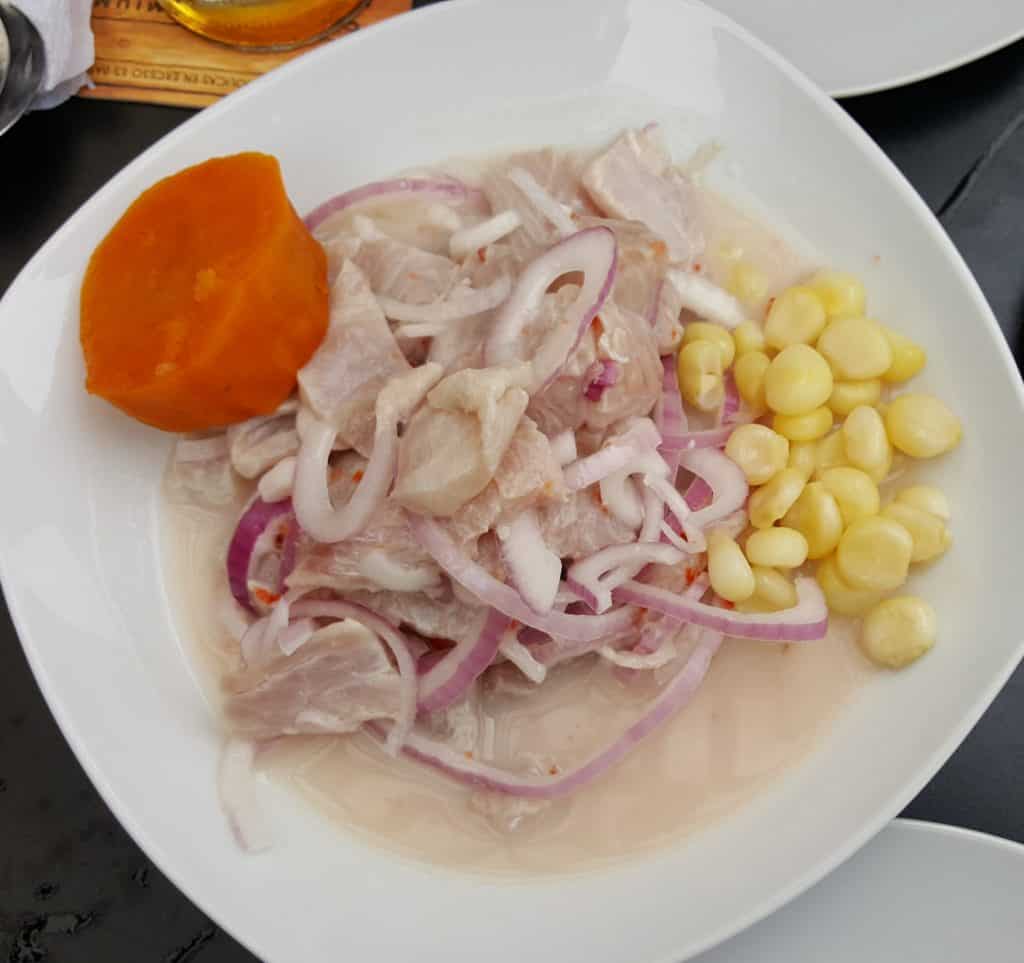
Urban Bistro has an interesting Seitan menu. This is a meat substitute made from wheat gluten. The prices here are reasonable. Below was not the most imaginative meal, but there are some good options.
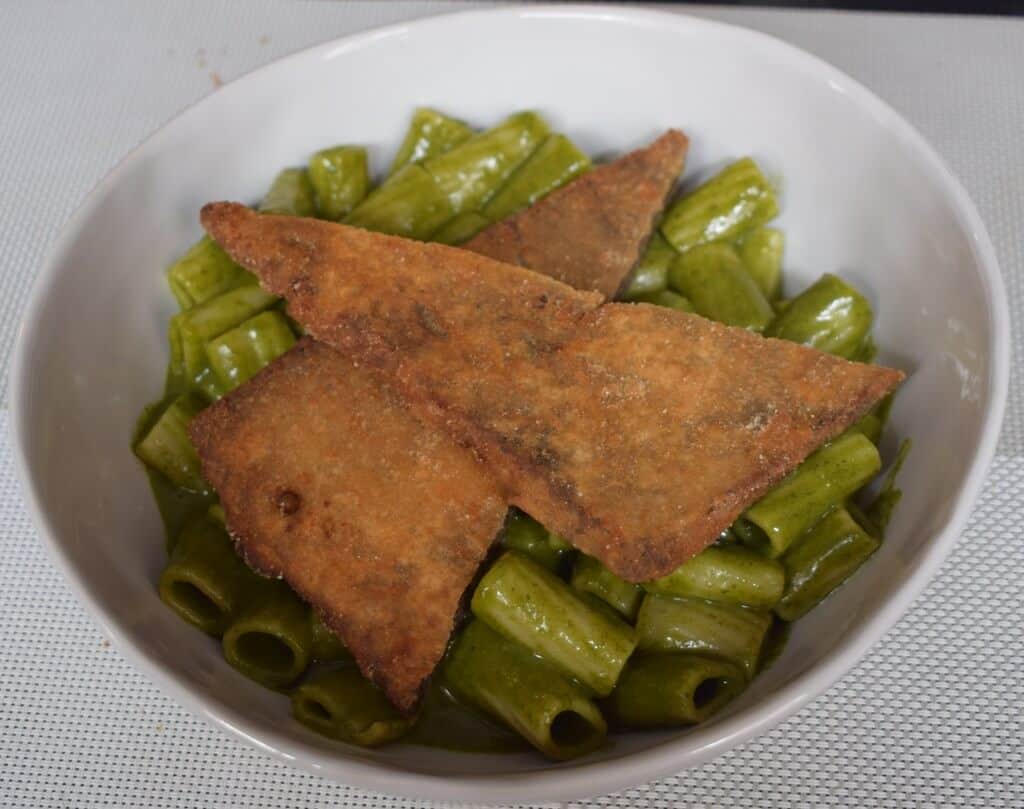
Bio-Leben is a tiny vegetarian restaurant in Miraflores. There is a small Bio-Leben herbal shop directly across the road from the restaurant. The food is average – on some days better than others. Price was 12 soles thus inexpensive so expect lower quality food. Below was on one of the better days.
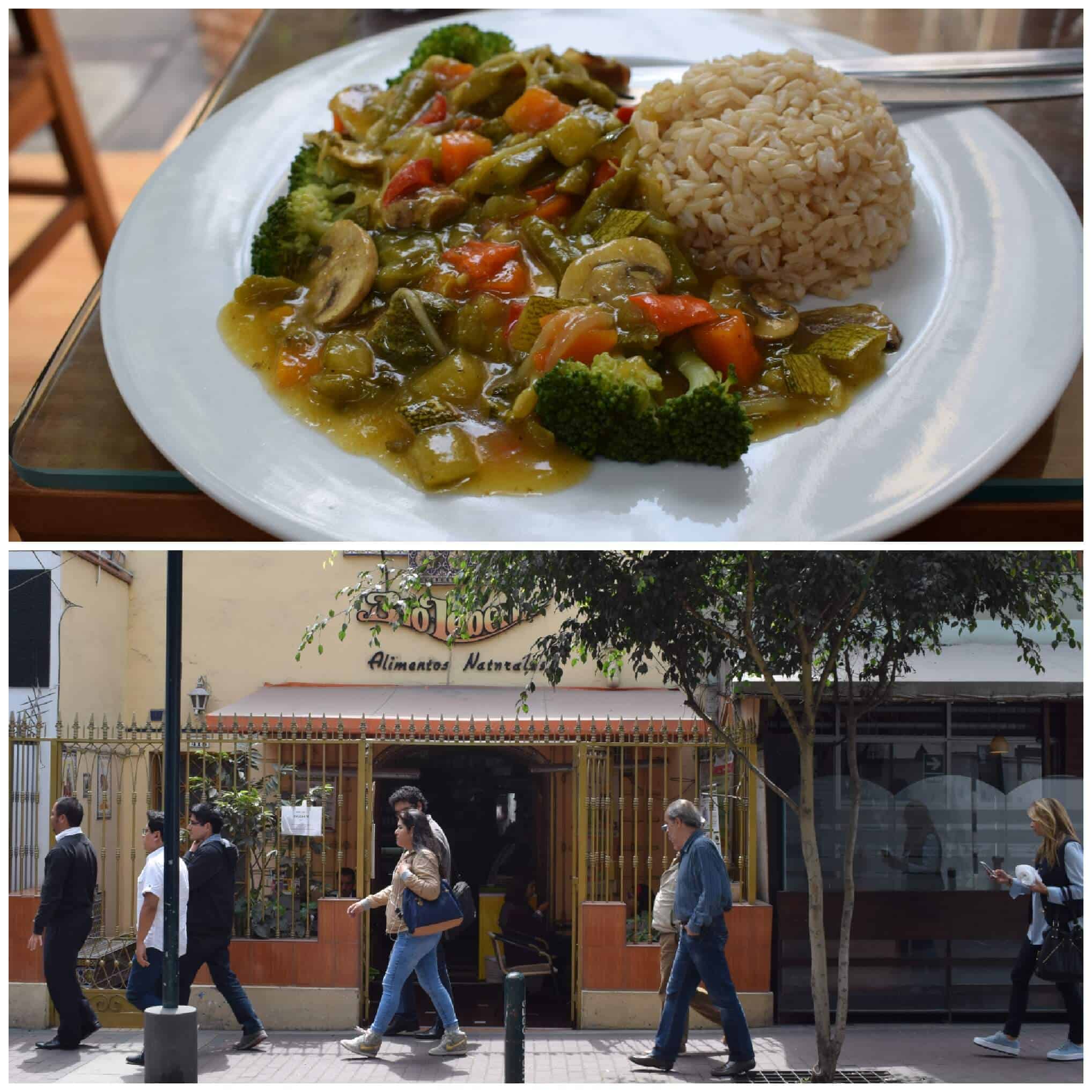
El Jardin de Jazmin has tasty and healthy vegan food options at decent prices (for Miraflores). This restaurant is definitely worth visiting for a vegan meal.

Germinando Vida seemed like the best vegan health option in Barranco neighbourhood. It had a good variety of healthy meal choices, along with very tasty additive-free food.
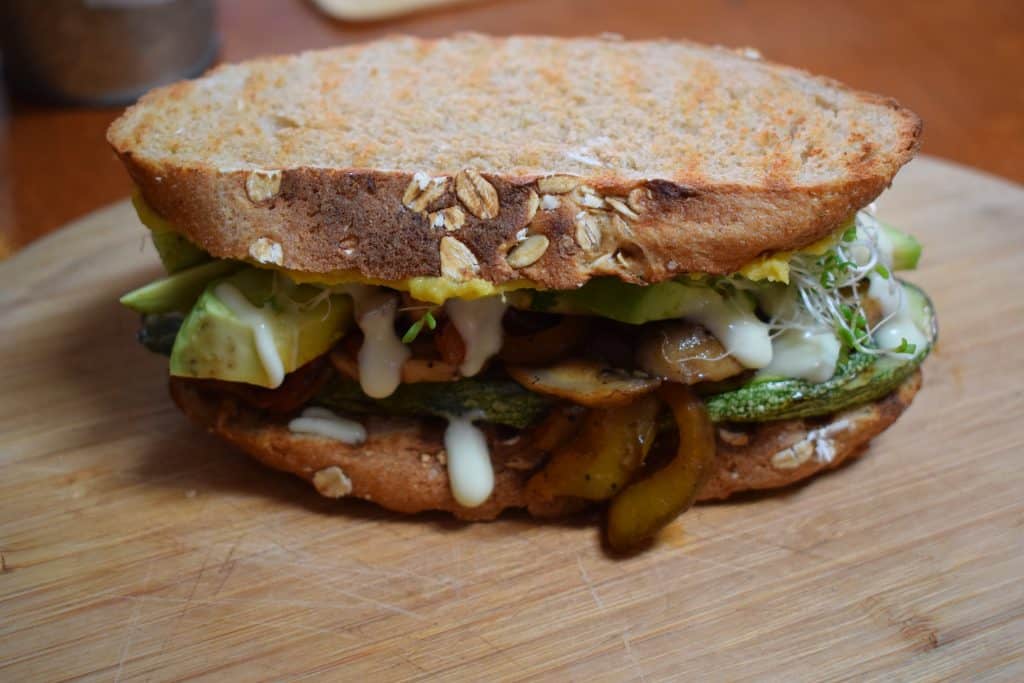
Once you discover good Chifa, you’ll get hooked (unfortunately this is probably due to the MSG-additive in the sauce). Chifa Men Hong in Barranco (Nicolas de Pierola Street) had good Chifa options with extra vegetables such as the one below. There were other options such as Chicken with Tamarind sauce and pineapple, which was not good. It isn’t as much a balanced meal if you have a plate full of chicken, pineapple and tamarind sauce, as it is when you get a plate like below with prawns and lots of vegetables. Make sure you pick the option “con verduras”. This translates to “with vegetables”.

Lima Food Markets
Mercado No.1 Surquillo
Mercado No.1 Surquillo is open every day of the week and has basic fruits and vegetables. You’ll also find exotic fruit like Lucuma and Chirimoya, but it isn’t much better than what you’d find in the large grocery stores.
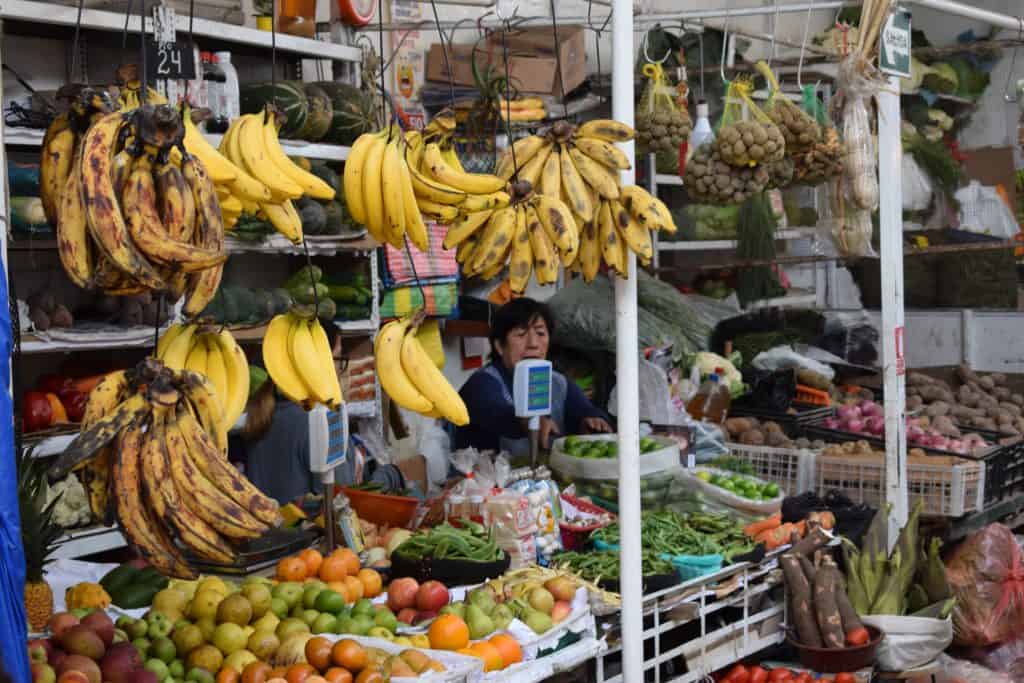
Bioferia
Rather wait for Sunday and go to the Bioferia at Surquillo. This is right next to the Mercado No.1. It has many of the best Peruvian superfruits and herbs. The general theme of the market is mostly vegetarian and health and wellness. Here you’ll find superfoods like cacao, natural honey, maca, herbal teas native to Peru, coffee beans, and almost everything you’d also find in the health shops, at slightly better prices.
There is another Bioferia in Miraflores on a Saturday. This one is called “Bioferia de Miraflores“, and it is located at Parque Reducto No.2. The stalls are very similar to what you’d find at “Bioferia de Surquillo”.

Mistura Food Festival
Mistura is the Lima food festival occurring in November each year. It is held in enormous tents with a large number of vendors. You will need many hours to walk through Mistura. There are different sections for Meats, Alcohol, Desserts, Seafood, Natural products as well as a separate tent for Cacao and Coffee. The location was in potentially the poorest and most dangerous district of Lima, but security was very good. Food prices here were a fraction of the prices in Miraflores, the rich tourist neighborhood.
The meat section included Cuy – or grilled guinea pig, and Anticuchos (grilled beef heart skewers), along with other regular meats such as cerdo (pig), and lomo saltado (beef). Seafood was mostly Ceviche. While the natural product section was the most interesting, containing every Peruvian Fruit, Superfood, or Herb you could think of. This included exotic fruits like Naranjilla, Aguate, Guanabana, Camu Camu, Lucuma, as well as Tokosh – a natural Inka Antibiotic made by fermenting potatoes. In addition, there was a small section with vegetarian/vegan stalls such as Urban Bistro and Germinando Vida.
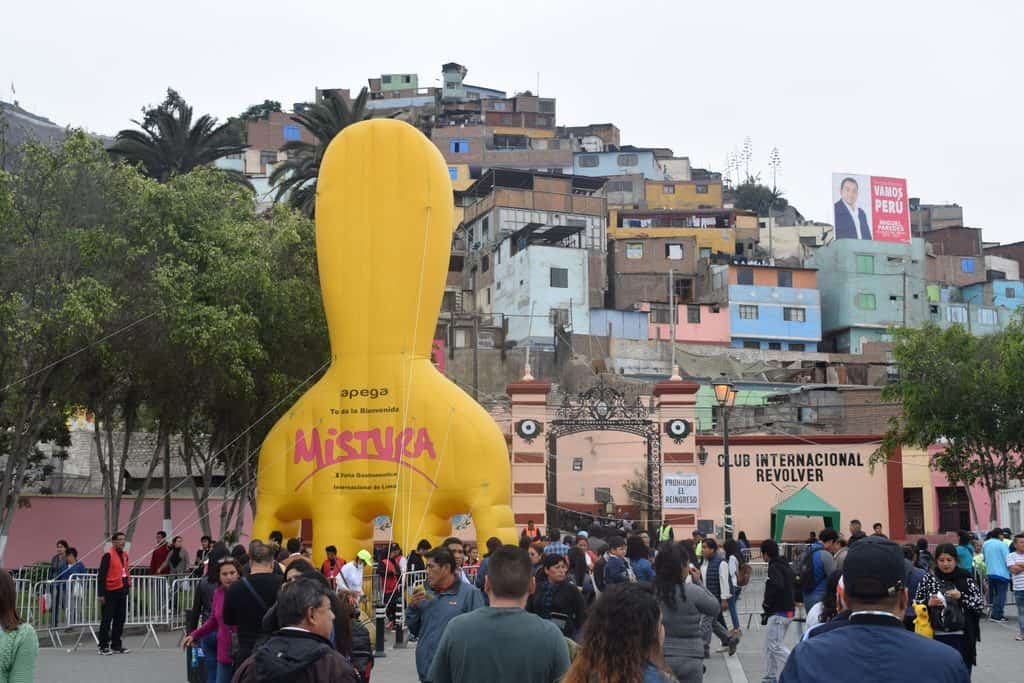
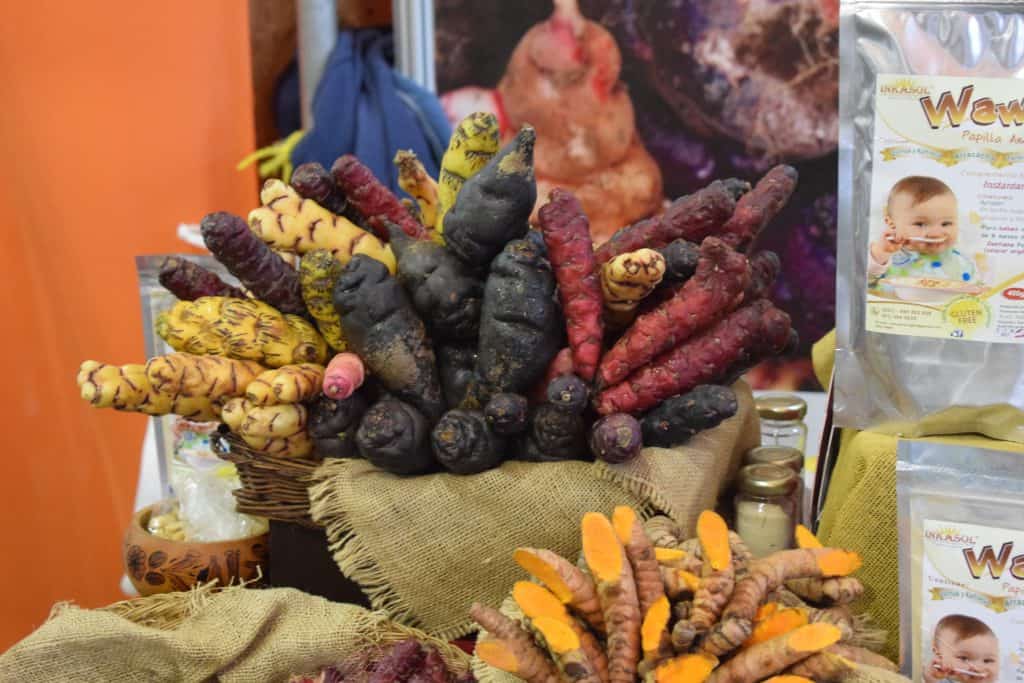
Lima Exotic Fruit
Tumbo is an interesting fruit very similar to Granadilla in taste and inner appearance. There is a lot of juicy sweet flesh inside, covering the small black seeds. This is one of my favorite exotic fruits in Lima.

Aguaje was one of the strangest exotic fruits I’ve ever tried. It’s not sweet, and there is only a thin layer of yellow flesh inside the scaly skin, along with a large seed in the middle. It does contain nutritional benefits such as Vitamin E, Vitamin A, Vitamin C, and Beta-carotene, but in this case, nature’s packaging is not attractive.
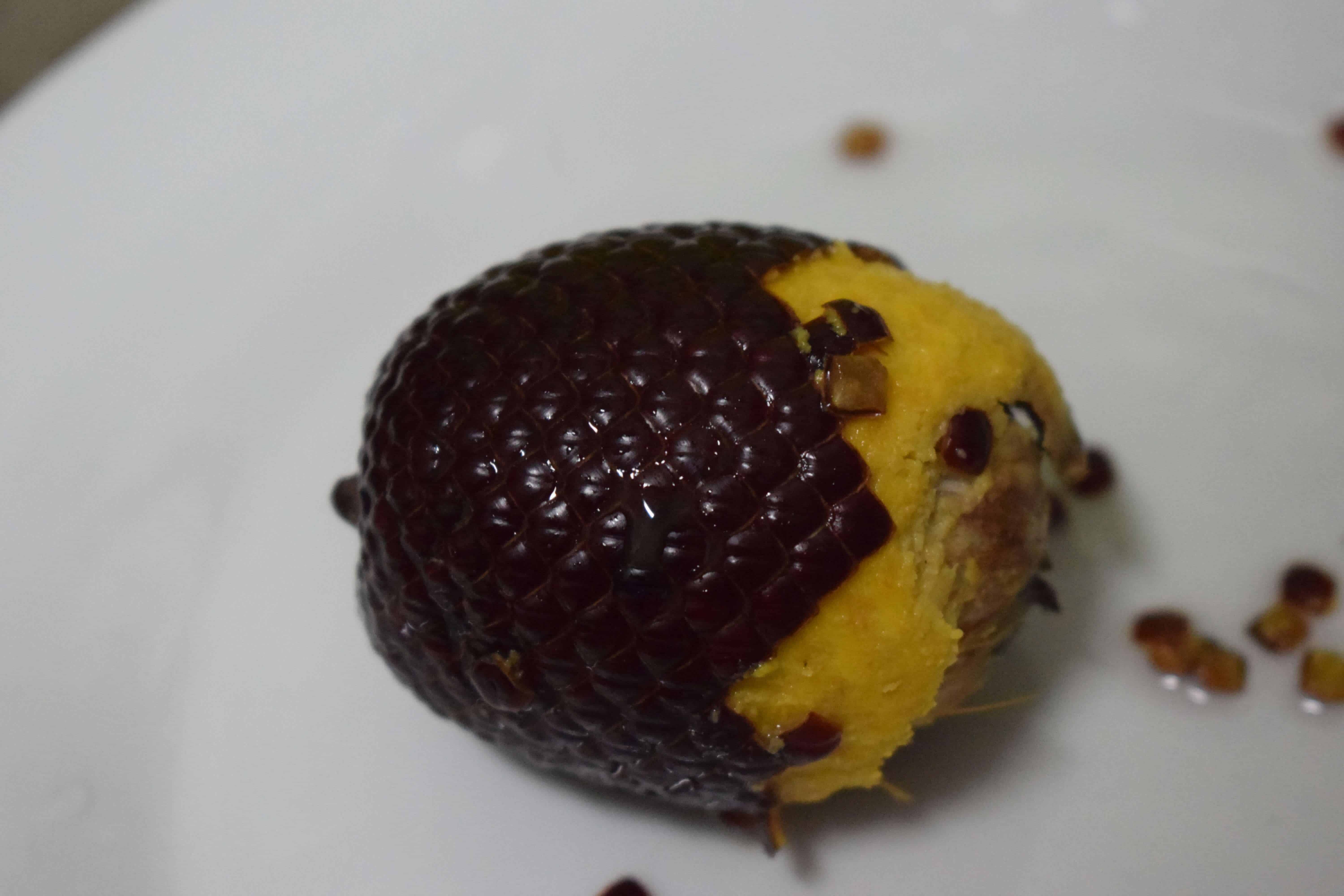
Pepino is a Peruvian fruit that can be best compared to a melon, without seeds inside. The taste is similar but less tarty than the traditional orange-fleshed melon. Perhaps it has more in common with the light-green-fleshed winter melon.
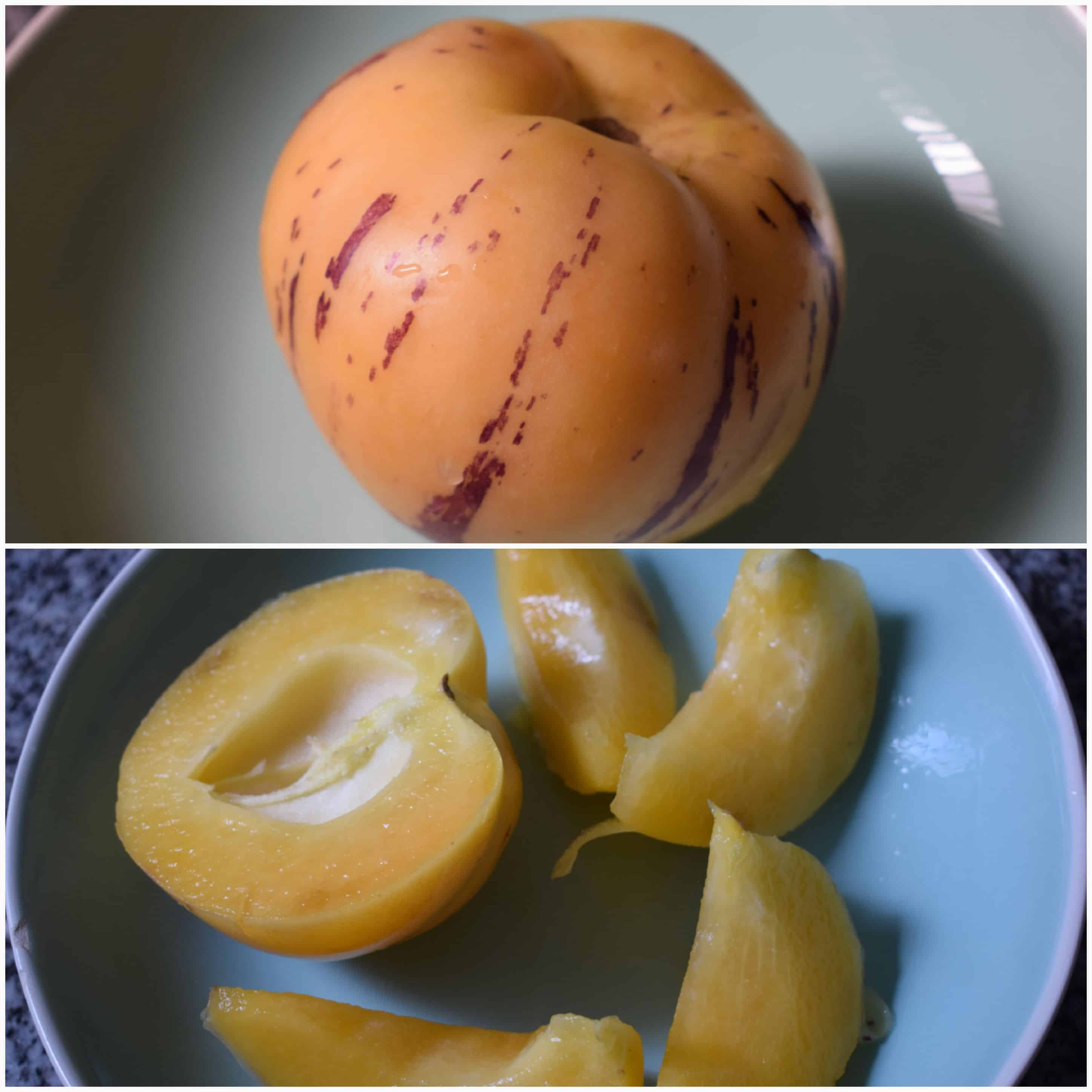
Coca Leaves in Lima
Coca leaf tea is one of the most popular drinks in Lima. It’s ubiquitous in hotel and hostel breakfasts. These leaves are better known as being the raw material in cocaine production. The only reason it is illegal in most countries (except e.g. Peru, Bolivia, Colombia and Ecuador), is because it can be refined into cocaine. The leaf itself is a healthy superfood, while the tea is warming and relaxing. It is not addictive and the only caveat is that it should be avoided by pregnant women and those with a history of heart disease.
It may, however, cause you to test positive for cocaine, due to trace amounts to be found in the tea. As bad as cocaine is, it does not justify the illegal status of the leaves. The real problem is the cocaine users and not the Coca leaves. It is important that we should have more superfoods like coca in our diets. For a real coca leaf smoothie, and to see its high nutritional content, check the Instagram post below.
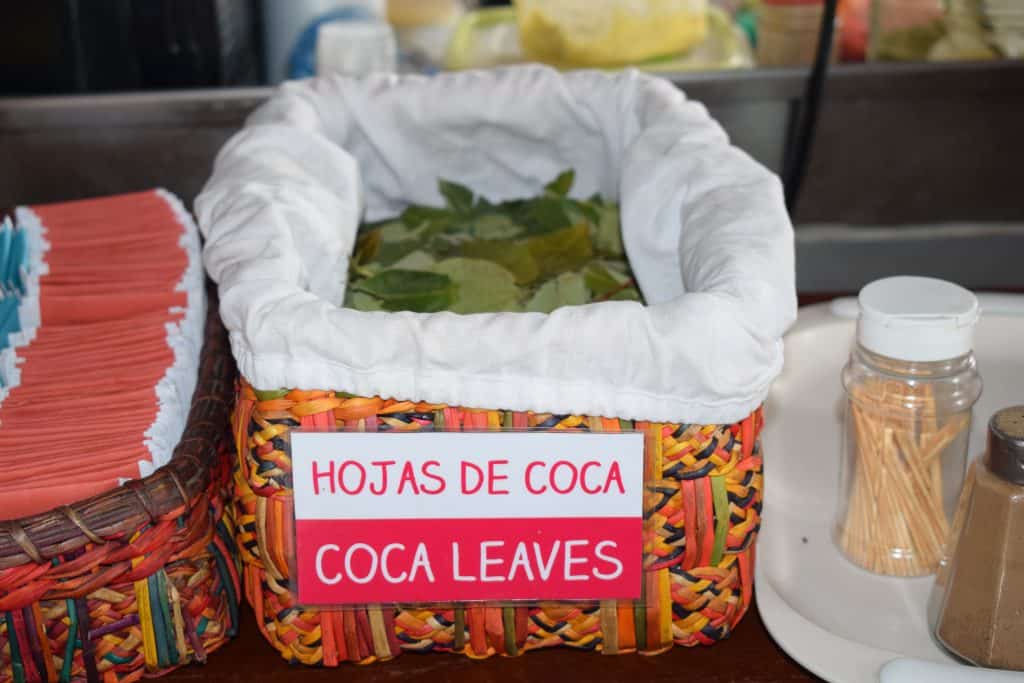
Lima Drinking Water Safe?
Avoid drinking water straight from the tap at all costs. Restaurants and hotels will serve you tea made with boiled tap water, so you’d have to decide if that’s a risk you’re willing to take. If you have the opportunity, use purchased mineral water to make coffee or tea. San Mateo was by far the best mineral water I could find. The other bottled waters were not from a mineral source but instead purified or processed tap water.
The Lima Health Travel Junkie Challenge
If you’re flexitarian, eat Ceviche – it’s healthy, raw fish salad. If you’re vegan, simply try out a few of the superfoods (such as Maca, Quinoa, Camu Camu, Cacao) and exotic fruits. Post in comments below which ones you enjoyed the most.
Lima Health Travel Junkie Scale
Fitness activities – 7.5
Food – 9
Cost of traveling – 7.5
Other Wellness-related activities – 8.5
Overall rating: 82%
To get the complete picture of Peruvian Food, there are great cooking guides available at Amazon such as “The Peruvian Kitchen”.
Read our other Peruvian Health & Wellness Guides: Cusco and Arequipa.
Did you enjoy this post? Post your questions & tips for Lima Wellness below in the comments section!
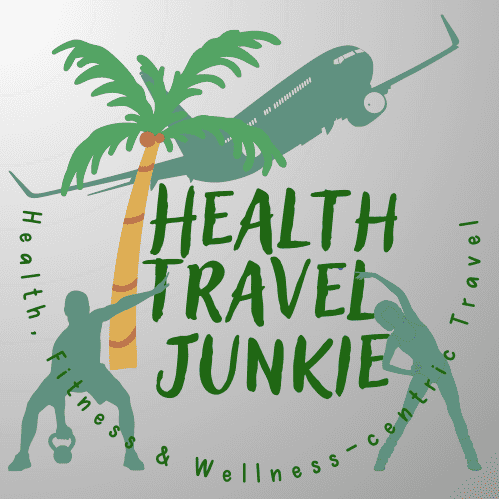

Great Post, when I visited Lima I temporarily became somewhat addicted to Ceviche, while initially I was a little hesitant to even try it. A reminder that whenever you’re in a new country, you always gotta try the local specialities. Probably within reasonable bounds, since I never tried the grilled guinea pig you mentioned above!